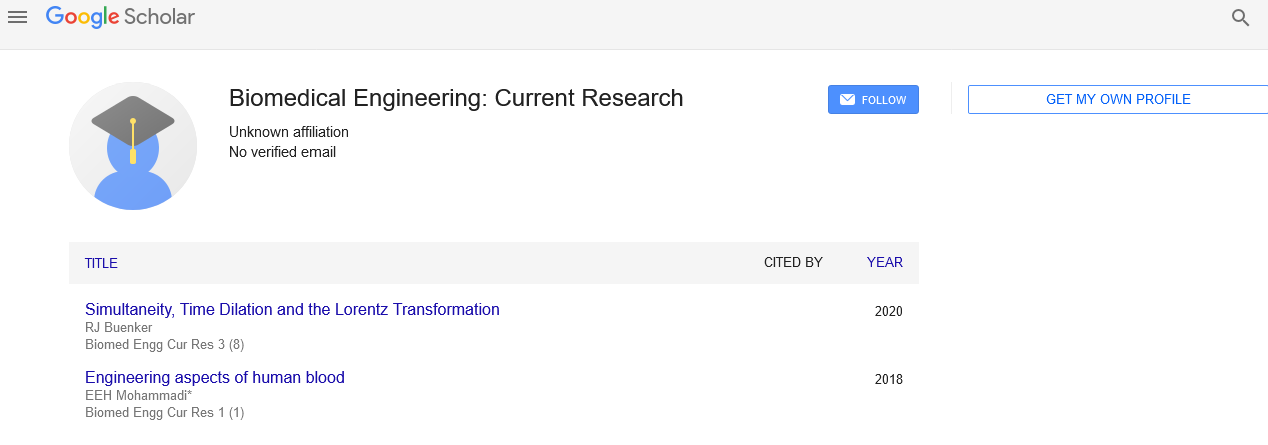Based on the risk of lymph node metastasis, endoscopic versus surgical therapy
Received: 20-Jan-2022, Manuscript No. PULBECR-22-4556; Editor assigned: 22-Jan-2022, Pre QC No. PULBECR-22-4556 (PQ); Reviewed: 15-Feb-2022 QC No. PULBECR-22-4556(Q); Revised: 22-Feb-2022, Manuscript No. PULBECR-22-4556(R); Published: 28-Feb-2022, DOI: 10.37532/PULBECR.22.4(1).04
Citation: Linn J. Based on the risk of lymph node metastasis, endoscopic versus surgical therapy. J Biomed Eng: Curr Res. 2022;4(1):04
This open-access article is distributed under the terms of the Creative Commons Attribution Non-Commercial License (CC BY-NC) (http://creativecommons.org/licenses/by-nc/4.0/), which permits reuse, distribution and reproduction of the article, provided that the original work is properly cited and the reuse is restricted to noncommercial purposes. For commercial reuse, contact reprints@pulsus.com
Abstract
Severe surgery to endoscopic therapy, the therapeutic intervention for early malignant and precancerous lesions of the upper Gastrointestinal (GI) tract has changed dramatically in recent years. In the last several decades, the incidence of Esophago Gastric Junction (EGJ) adenocarcinoma has been steadily increasing in Western countries. A similar trend has been reported in Asia, owing to the availability of Helicobacter pylori (H.pylori) eradication medication, a high incidence of gastroesophageal reflux disease and obesity, and dietary variables, and partially shared with stomach cancer, H.pylori infection, and dietary factors. Endoscopic submucosal dissection (ESD) or endoscopic mucosal resection (EMR) is a minimally invasive procedure that can cure superficial GI cancers such esophageal, gastric, and colonic lesions. Furthermore, because of the variations in the incidence of Lymph Node Metastasis (LNM) between esophageal and gastric cancer, the ESD/EMR curative resection criteria for esophageal and gastric cancer are different
INTRODUCTION
The the prevalence of metastatic EGJ adenocarcinoma is unclear, it is unknown which curative resection criteria are superior for EGJ adenocarcinoma. It’s worth noting that the inability to assess pathologic lymph nodes (LNs) is regarded as the primary disadvantage of endoscopic therapy (ET), as it might have a substantial impact on patients’ survival in the case of metastatic LNs. Preoperative predictors of LNM were determined using eligible patients from the Surveillance, Epidemiology, and End Results (SEER) database, followed by a comparison of the effects of radical surgery and ET on long-term survival in early-stage EGJ adenocarcinoma. Finally, for patients with low risk of ET, an early-stage EGJ adenocarcinoma treatment protocol was presented. The SEER database, which covers over 28 percent of the population in the United States from various geographic regions (18 cancer registries) from 2004 to 2016, is supported by the National Cancer Institute (NCI). Data items and codes based on the North American Association of Central Cancer Registries (NAACCR) were used to gather and recode SEER data. Our study received institutional permission and acquired access to the SEER database. Because of the rising number of clinical morbidities, Elderly Endometrial Cancer (EEC) patients offer a complex clinical condition. Minimally Invasive Surgery (MIS) has been found to enhance surgical and clinical results in this group of patients. The goal of this research was to look at the peri-operative and oncological outcomes of EEC patients who received laparoscopic (LS) or Robotic Surgery (RS). In industrialized nations, endometrial cancer (EC) is the most frequent gynecological cancer. At the time of diagnosis, a significant number (15-25%) of women are over 70 years old, and the risk of EC rises with age. Patients who are elderly have a greater prevalence of unfavorable prognostic variables, and their age is a risk factor to consider when choosing adjuvant therapy. In fact, more aggressive and advanced malignancies are frequently detected in these patients. In the vast majority of instances, surgery is the usual therapy. The fundamental issue in the care of older patients, however, is the presence of comorbidities, which raise the risk of surgical complications. As a result, it is critical, on the one hand, to achieve the greatest possible oncological outcome. Patients from seven institutes were included in this retrospective multi-institutional study: Fondazione Policlinic Universitario A. Gemelli of Rome, Regina Elena National Cancer Institute of Rome, Santa Chiara Hospital of Trento, Azienda Ospedaliero-Universitaria di Bologna, University of Pisa, “Miulli hospital” of Acquaviva delle Fonti in Bari, and Hygeia Hospital, Marousi, Athens Greece. Each participating institution’s internal review board gave its approval to conduct the study independently. In compliance with local and international regulations, all patients gave their informed permission to laparoscopic or robotic surgery. The statistics cover the months of April 2002 and October 2018. The study included all EC patients aged 70 or older who had undergone MIS. Surgeons conducted both laparoscopic and robotic surgery in the majority of the facilities, with the surgical strategy chosen based on clinical factors or surgeon choice. Da Vinci Si or Xi robotic platforms were used (Intuitive Surgical Sunnyvale, CA). The 70-year cut-off was based on earlier research that looked at the occurrence of comorbidities that were relevant to surgery. A medical history, physical examination, vaginal-pelvic examination, chest X-ray, ultrasound scans, pelvic Magnetic Resonance Imaging (MRI), or Computed Tomography (CT) scans were used to examine all of the patients prior to surgery. For each patient, the number of relevant comorbidities was counted. There were no comorbidity rating methods available because the study was retrospective. Both groups gathered information about the surgical process and lymph node assessment [i.e. systematic lymphadenectomy, lymph node sampling, Or Sentinel Lymph Node Technique (SLN)]. The Common Terminology Criteria for Adverse Events were used to describe intra-operative and post-operative problems.





